Navigating the intricacies of Japanese culture can be daunting for the uninitiated traveler. However, by immersing oneself in the country’s etiquette and language, a richer, more authentic experience awaits. From mastering the art of sushi consumption to understanding the nuances of dining customs, travelers who embrace these cultural touchstones forge deeper connections with the local community. And with the guidance of language classes, even the most basic interactions become opportunities to showcase one’s respect for Japan’s traditions, leaving a lasting impression on both parties. Delve deeper into this cultural exploration, and uncover the rewards that await.
Key Points
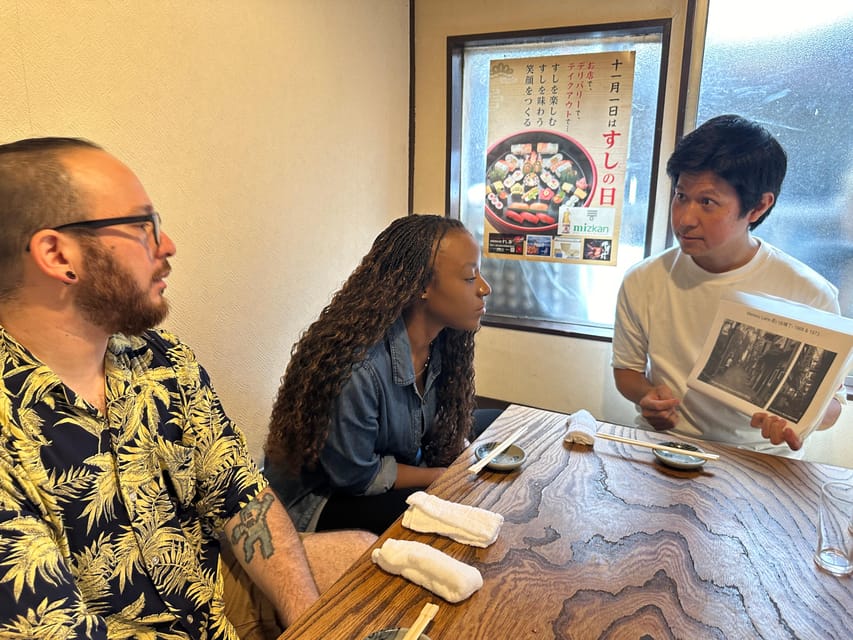
- Understand and apply essential Japanese etiquette, including proper chopstick usage, sushi consumption, and navigating social dynamics.
- Master conversational Japanese language skills, including essential phrases, honorifics, and cultural references to enhance interactions.
- Learn about Japanese cultural nuances, such as body language, personal space, and punctuality, to avoid unintentional missteps.
- Participate in immersive language and etiquette classes to gain the knowledge and confidence to blend in seamlessly as a traveler.
- Develop cultural awareness and adaptability to maximize the authenticity and enjoyment of your Japanese experience.
Japanese Customs and Rules
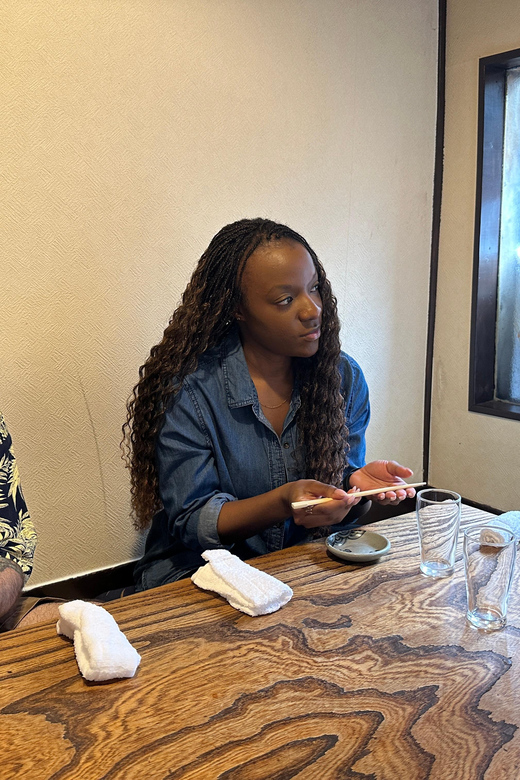
Japan’s cultural etiquette and customs are deeply rooted in its history, shaping the country’s social dynamics and interpersonal interactions. From proper table manners to respectful body language, understanding these nuances is essential for seamless integration.
Punctuality, for instance, is highly valued, as tardiness is considered disrespectful. Likewise, removing one’s shoes when entering a home or temple is a common courtesy.
Navigating these customs can seem daunting, but embracing them enhances the overall experience and helps travelers blend in effortlessly. By familiarizing themselves with these unwritten rules, visitors can demonstrate their appreciation for Japanese culture and foster meaningful connections with the locals.
Proper Sushi Consumption

Sushi etiquette involves a delicate dance of precise movements and mindful consumption. Diners should handle sushi with their fingertips, dipping it lightly in soy sauce rather than submerging it.
Wasabi should be added sparingly, as excessive use can overwhelm the flavors. Ginger should be consumed between bites to cleanse the palate.
Chopsticks should never be left standing upright in the rice, as this resembles incense used for funeral rites. Maintaining good posture and refraining from loud conversation demonstrates respect for the dining experience.
Mastering these nuances ensures a harmonious sushi encounter, allowing one to fully savor the flavors and ambiance.
Chopstick Usage Techniques
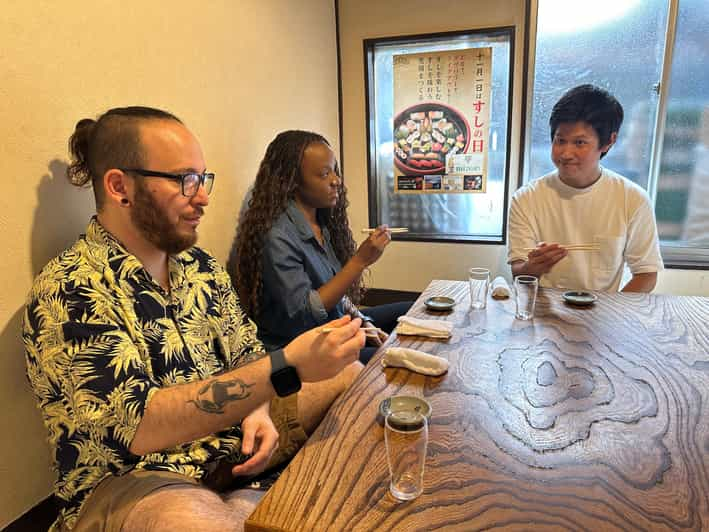
Two common techniques are used when wielding chopsticks. The "pinching" method involves holding the chopsticks between the thumb and index finger, using the middle finger to maneuver.
The "holding" technique has the chopsticks resting on the thumb, with the index and middle fingers guiding their movement. Both methods require dexterity and practice to master.
Proper positioning allows for precise pick-up and placement of food. Understanding these techniques enhances one’s dining experience in Japan, demonstrating cultural awareness and respect.
Mastering chopstick skills signals to hosts and fellow diners that the individual has embraced Japanese dining customs, leading to a more immersive and authentic experience.
Authentic Japanese Language Insights
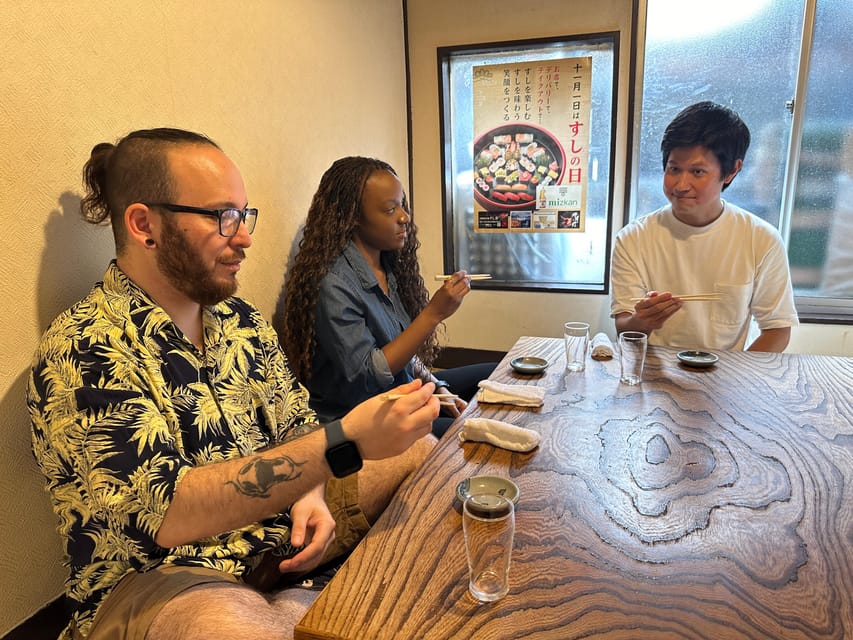
Mastering the nuances of the Japanese language can greatly enrich one’s cultural experience in the country.
The etiquette class provides insights into authentic Japanese language usage, covering essential phrases, honorifics, and conversational etiquette. Participants learn how to properly greet, thank, and address people in various social contexts.
Understanding the language’s intricacies, such as indirect communication and polite speech, equips travelers to navigate interactions more comfortably.
Plus, the class explores common idioms and cultural references, helping participants grasp the deeper meaning behind everyday conversations.
Dining Etiquette Essentials
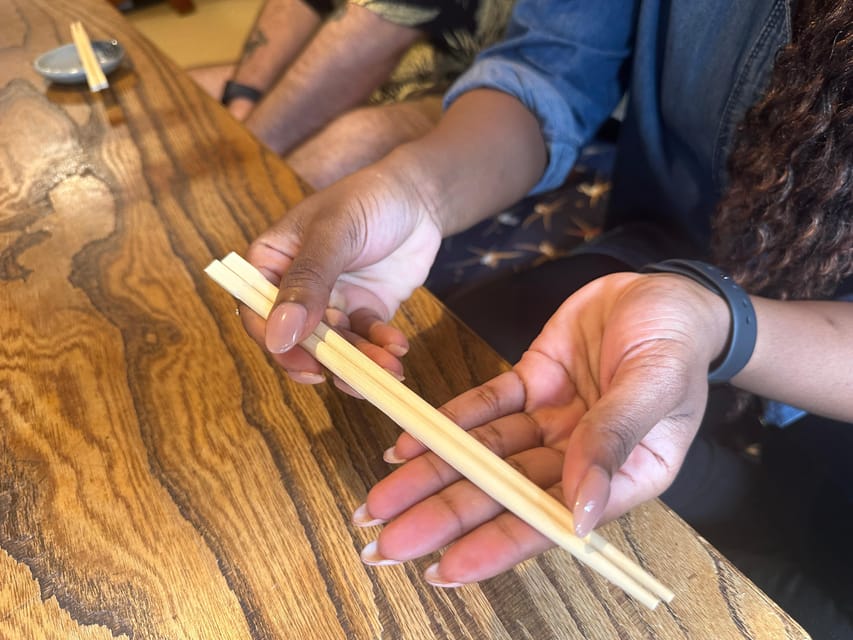
Along With exploring the Japanese language, the etiquette class equips participants with the dining etiquette essentials needed to fully enjoy the country’s culinary culture.
Learners master the proper use of chopsticks, understanding the significance of various dishes, and navigating the customs of an izakaya (Japanese pub).
Key dining etiquette covered includes:
- Proper ways to hold and use chopsticks
- Appropriate etiquette for consuming sushi and other dishes
- Etiquette for ordering, serving, and consuming beverages
- Understanding the role of seasonings and condiments
- Navigating the social dynamics of shared dining experiences
Izakaya Customs and Etiquette
One of the key aspects of Japanese dining etiquette covered in the class is the customs and etiquette associated with izakaya, the traditional Japanese pubs.
Participants learn about the proper way to order and consume drinks at an izakaya. They’re taught to avoid filling their own glass and instead wait for others to pour for them.
Drinking etiquette also includes understanding when and how to engage in celebratory cheers.
Plus, the class covers the expected behaviors when dining at an izakaya, such as not leaving chopsticks standing upright in a bowl of rice, which is considered disrespectful.
Mastering these nuances helps ensure a more immersive and comfortable experience at these beloved Japanese establishments.
Cultural Nuance Navigation
With a grasp of Japanese customs and etiquette, travelers can seamlessly navigate cultural nuances and elevate their experiences.
Understanding the cultural landscape empowers visitors to engage with locals authentically and avoid unintentional missteps.
Key considerations include:
- Familiarizing oneself with body language, personal space, and conversation norms
- Knowing when to bow, make eye contact, and use appropriate honorifics
- Appreciating the significance of punctuality and respecting schedules
- Learning to navigate business and social hierarchies with sensitivity
- Recognizing the importance of humility, patience, and adaptability
Equipping oneself with cultural insights ensures a more enriching journey, fostering deeper connections and a richer appreciation for the Japanese way of life.
Comfortable Experience Guarantee
By understanding the cultural nuances and etiquette, travelers can ensure a comfortable and seamless experience in Japan.
The etiquette and language class equips participants with the knowledge to navigate the intricacies of Japanese customs, from proper sushi consumption to drinking etiquette.
With a live guide, travelers learn the dos and don’ts, ensuring they blend in seamlessly and avoid any cultural missteps.
This ultimately leads to a richer and more enjoyable journey, as they can fully enjoy the Japanese way of life without feeling out of place.
The class provides a valuable foundation to make the most of one’s time in the country.
Frequently Asked Questions
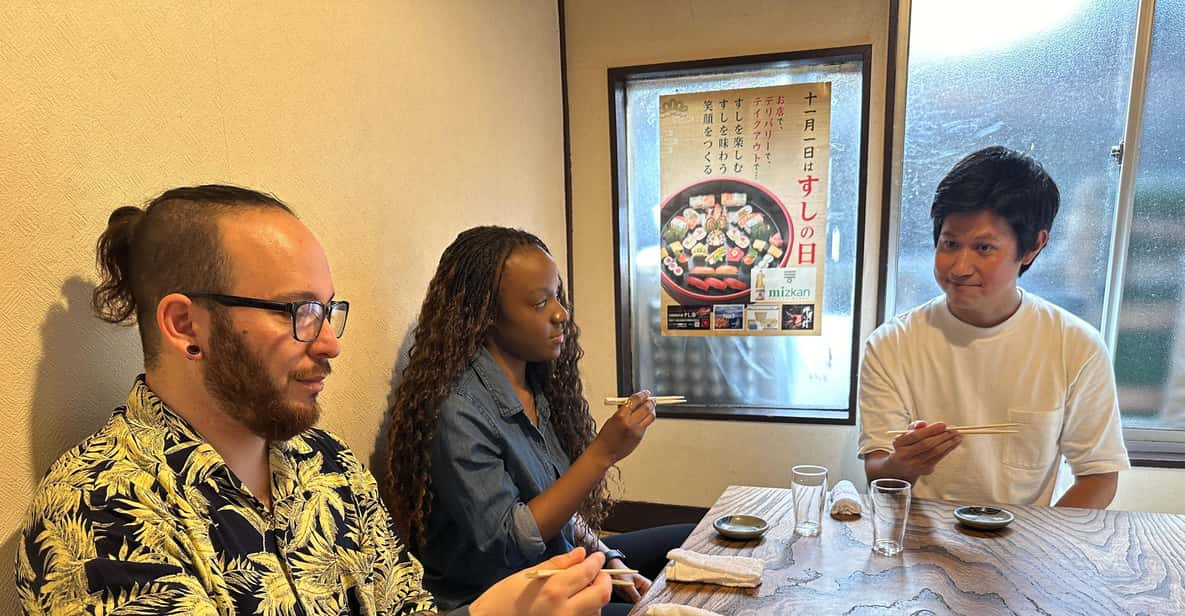
What Is the Dress Code for the Activity?
The activity does not specify a dress code. Participants should wear comfortable, casual attire that allows them to move freely and participate in the cultural activities comfortably. No formal dress is required.
Can I Bring My Own Food and Drinks?
No, participants cannot bring their own food and drinks. The activity does not include meals or beverages, and the focus is on learning proper dining and drinking etiquette in an authentic Japanese setting.
Is the Activity Wheelchair Accessible?
The activity is not suitable for people with mobility impairments or wheelchair users, as per the important information provided. It seems the activity location and format may not accommodate those with special accessibility needs.
Do I Need to Make a Reservation in Advance?
Yes, participants should reserve their spot in advance as the group size is limited to 6 people. The activity allows free cancellation up to 24 hours prior for a full refund.
Is There a Minimum Age Requirement for Participants?
The activity doesn’t specify a minimum age requirement. However, it’s recommended for participants aged 16 and above to fully engage with and appreciate the cultural etiquette lessons and dining experience.
Recap
Immersing oneself in Japanese etiquette and language classes ensures a rewarding cultural experience. Mastering local customs, from proper chopstick usage to respectful body language, facilitates meaningful connections with the Japanese people. By learning essential phrases and etiquette, travelers can navigate the country with confidence, showcasing their appreciation for Japan’s rich traditions. This deep cultural understanding elevates the journey, transforming it into a truly authentic and memorable adventure.






